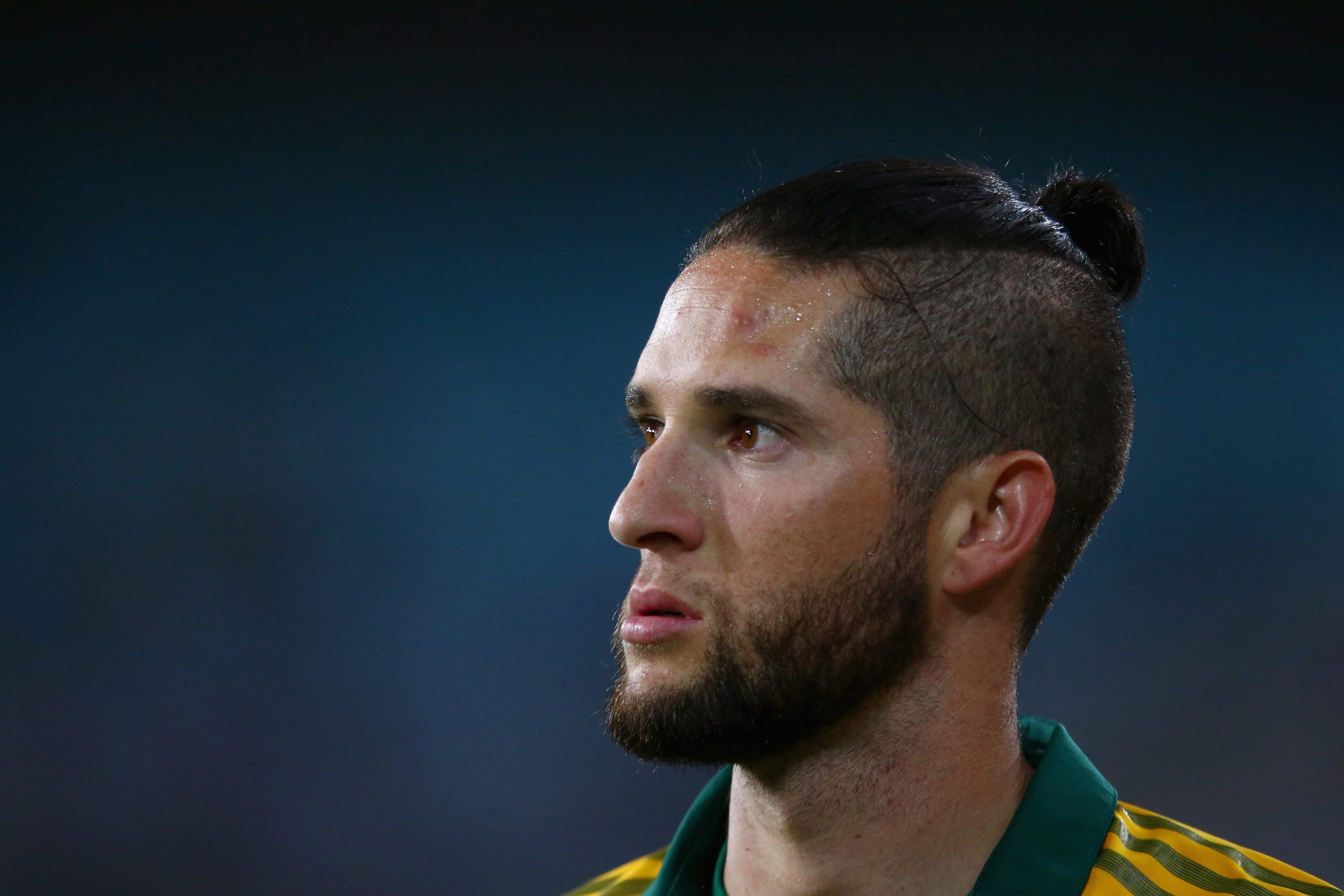When SA cricket went right, Wayne Parnell went left
The former Proteas bowler set the scene alight when he was introduced to international cricket. But that fire died down and he is now essentially a freelancer, taking his talent wherever it pays.
Author:
4 December 2019

Wayne Parnell is comfortable being different. Standing out from the crowd is a natural by-product when you’re a left-arm seamer in cricket, especially in South Africa where southpaws who can sling it down with venom are as rare as honest politicians.
But there’s more to it than just the way he delivers a ball. His Instagram account could be mistaken for one belonging to a social media influencer, given its volume of expensive sneakers and well composed, high-resolution shots of world-famous landmarks.
Unlike many of his contemporaries in South Africa, he does not enjoy golfing or fishing. Instead, he prefers to lose himself in photography, fashion and other pursuits that speak to his “softer, more sensitive nature”, he says.
“Sport in South Africa is quite macho,” he says from his summer base in Cape Town. “Those traits have existed for a long time in our cricket. Guys who subscribe to that tend to do well and become popular figures in teams and with coaches. That comes from our school system, where you have to look a certain way and speak a certain way. I’ve never fully been comfortable with it.”

Parnell’s enviable natural talent was forged in the elite sporting factory that is Grey High School in Port Elizabeth. Here, the rangy lefty decimated batting units, once taking all 10 wickets in a first team match before bagging nine the following week.
He made his first-class debut as a 17-year-old for Eastern Province, claiming a hat-trick – all bowled – in his third game. In 2008, he captained South Africa at the Under-19 ICC Cricket World Cup in Malaysia, where he steered the team to the final while finishing as the competition’s highest wicket-taker.
“I would not have been the cricketer I am today if I didn’t go to Grey or another top sports school,” Parnell says. “The discipline, the training, the competitive spirit were all instilled in me from a young age. But that stuff also comes with a certain bravado and, sooner or later, you either embrace it and acclimatise or you chafe against it.”
Announcing himself in style
In January 2009, at just 19, Parnell made his international debut in a Twenty20 (T20) game against Australia. When Australia arrived in South Africa for a reciprocal tour later in the year, Parnell exploded into South Africa’s cricket consciousness by removing Michael Clarke, Ricky Ponting and Mike Hussey inside four overs at Centurion before finishing the one-day international (ODI) with 4/25.
It felt like a watershed moment for South African cricket. Parnell was not simply a left-arm seamer, he had the ability to bring the ball back into the right hander. It was a nightmare for top-order batters looking to get on the front foot and drive the baby-faced rookie through the covers. Almost sadistically, Parnell would lure his victim forward before whipping the ball back on to his pads or sliding it across him to find the outside edge.
Related article:
A Test call-up was inevitable. In a must-win match against England at the Wanderers in Johannesburg in January 2010, Parnell removed Andrew Strauss and Kevin Pietersen in the second innings to help set up a series-saving win by an innings and 74 runs.
But with Dale Steyn and Morne Morkel comfortably in possession of the new ball, and Jacques Kallis still charging in when required, Parnell needed to remain at his best if he was going to keep his place in the team. A sorry return of 0/103 in an innings defeat against India in Kolkata was his last Test for four years.
“If I’m honest, I never invested enough in red ball cricket when I was younger,” Parnell says, reflecting on his six Test appearances. “The way I saw it, I was never going to dislodge Dale and Morne, but I backed my skills to have a thriving career playing ODIs and T20s. So I focused my game on developing as a white-ball specialist.”
Lone left-armer
Parnell developed largely on his own. He received mentorship from the likes of Herschelle Gibbs, Robin Petersen and Johan Botha, and credits Graeme Smith and Mark Boucher for their tactical acumen. But being a left-arm seamer has its drawbacks when you’re looking to fine-tune your game with technical nous.
“There just wasn’t anyone like me in the dressing room,” Parnell says. “Young batters and right armers, even wicketkeepers and spinners, had big names around so they could pick their brains and discover trade secrets. Myself and Lonwabo Tsotsobe [another left-arm seamer who was briefly the best ODI bowler in the world] didn’t have that luxury.”
He continues: “As a young kid, that made me feel different and maybe that meant I stayed in my shell a little more than I would have liked. If I could go back in time, I would have asked more questions and engaged more with the seniors in the team. Having said that, I wish there were more guys who wanted to offer advice.”
Parnell does not hold any grudges. He explains that there are insecurities even at cricket’s apex. Some veterans were understandably hesitant to offer a leg up to a younger teammate if it meant their place in the side would be in jeopardy.
This dynamic is less prevalent now, Parnell says, as many players operate around the world in a variety of T20 and Ten10 leagues. This interchanging of philosophies and cultures has fostered a new breed of cricketer, one that is more open and willing to share ideas.
Related article:
“When I first started, the IPL [Indian Premier League] wasn’t what it is today and most of the guys were still rooted in the old environment where playing international cricket was their best source of income,” Parnell says. “This naturally made some guys a little cagey. Now, your opponent today is your teammate tomorrow and you can get coached by five different guys in a year. It’s incredible how fluid the thinking is and if you’re not a good guy and not willing to engage, you can get a reputation. It’s now in your interest to be more open.”
Arm for hire
Parnell is a modern freelancer. He has represented teams in India, Pakistan, Canada and the Caribbean. In 2018, he signed a three-year Kolpak deal with English county Worcestershire and will play in the new 100-ball competition, The Hundred, next season after the Manchester Originals parted with £50 000 (about R960 000) for his services.
It is telling that over his 13-year career, Parnell has played 206 domestic T20s and only 75 first-class matches. The thrill of compact cricket and the financial rewards on offer are enticing prospects for a generation of athletes who are the richest in the sport’s history.
Parnell stiffens at the suggestion that he is simply a gun for hire. “We have a limited time as professional cricketers,” he says. “We have to maximise our earning potential and provide the best lives for our families. If you are an accountant or an electrician or a journalist, and you were offered the chance to make good money overseas, to travel the world and do what you love, wouldn’t you grab that with both hands?”
Crossing distant horizons has also broadened Parnell’s world view. Were it not for franchise cricket, he would never have played in Pakistan, something that he explained was always an ambition of his, having watched the great Wasim Akram as a boy.
Related article:
His interest in photography and the enjoyment he gets from curating his social media persona were both born on the road in foreign locations. A creative side to his personality was discovered that would otherwise have remained dormant.
He laughs when asked if his Instagram account is an accurate representation of his authentic self. He revealed that some of his teammates and opponents have derided him for being “flashy” or a “show-off”, but he’s not bothered.
“People enjoy different things and have different hobbies,” he says. “You can’t please everyone, especially in South Africa. In England, people are more accepting of differences. That’s why you have guys who write and paint and enjoy going to the theatre. They have broader views in some ways in the UK.”
Now past 30, Parnell knows his international career is behind him. The prodigal teenager who looked destined to etch his name as a legend of South African cricket will likely be best remembered for the things he could have done in a national shirt, rather than the things he actually did in 111 matches for his country.
However, he remains the most capped left-arm seamer in South Africa’s history and his 150 wickets across the three formats means he’s also the most prolific.
Parnell was destined to be different. A unicorn in a herd of chest-thumping rhinos. He always stood out, just a little too far to the left for some.




